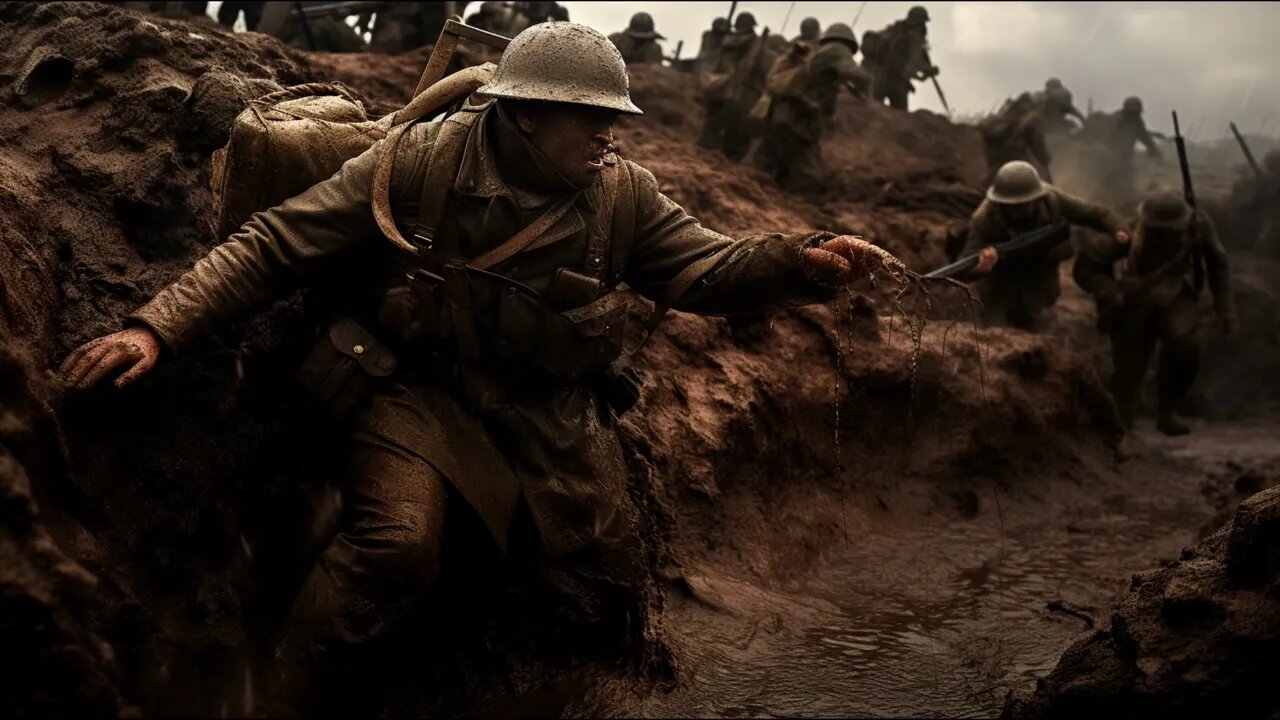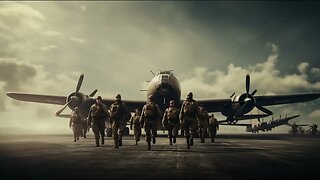Premium Only Content

The Battle of the Somme: A Pivotal Turning Point in World War I
Celebrate a century of remembrance with our documentary on the Battle of the Somme, a pivotal and haunting chapter in World War I history. Discover the struggles, innovations, and sacrifices of the brave soldiers who faced the brutality of trench warfare. Explore the enduring impact of this battle on military tactics, and reflect on the cost of war. Join us as we journey through the historic battlefield, revealing lessons from the past that resonate even today.
===============================
SUBSCRIBE TO THIS CHANNEL FOR MORE WORLD WAR STORIES:
https://www.youtube.com/@worldwarstory
===============================
TIMESTAMP
0:33 - Background
1:02 - Planning and Preparation
1:54 - The Battle Begins
3:13 - Early Challenges and High Casualties
3:40 - The Battle Evolves
4:32 - End of the Battle
4:53 - Legacy and Remembrance
5:26 - Conclusion
Battle of the Somme
The Battle of the Somme, fought in 1916, is one of the most famous battles of World War I.
The Battle of the Somme resulted in devastating casualties on both sides, making it a symbol of the war's brutality.
Many nations commemorate the Battle of the Somme as a solemn reminder of the sacrifices made.
The Battle of the Somme marked a turning point in the war and influenced future military strategies.
The battlefield of the Somme is now a place of remembrance, with numerous memorials and cemeteries.
World War I
World War I, also known as the Great War, was a global conflict that lasted from 1914 to 1918.
The assassination of Archduke Franz Ferdinand of Austria-Hungary is often considered the catalyst for World War I.
The war involved many nations and resulted in millions of casualties and significant political changes.
Key events of World War I include battles like the Somme, Verdun, and the signing of the Treaty of Versailles.
The war introduced new technologies and strategies that would later influence modern warfare.
Trench warfare
Trench warfare was a hallmark of World War I, characterized by opposing armies dug into elaborate trench systems.
The Western Front was notorious for the extensive trench networks that stretched from the North Sea to Switzerland.
Trench warfare was marked by conditions of extreme hardship, including mud, rats, and the constant threat of enemy fire.
Both sides employed barbed wire, machine guns, and poison gas to defend their trenches.
The challenges of trench warfare made it difficult for either side to achieve decisive breakthroughs.
Western Front
The Western Front was one of the primary theaters of World War I, stretching across Western Europe.
Battles on the Western Front, like the Somme and Verdun, were characterized by trench warfare and heavy casualties.
The Western Front included key countries such as France, the United Kingdom, Germany, and Belgium.
The front saw numerous offensives and counterattacks, but the lines remained relatively static for much of the war.
The Western Front's trenches and battlefields are now sites of historical significance and remembrance.
The Battle of Verdun
The Battle of Verdun, fought in 1916, was one of the longest and bloodiest battles of World War I.
It took place between the French and German forces, with both sides suffering significant casualties.
Verdun symbolizes the French determination to defend their territory and resist the German advance.
The battle ended inconclusively, but it drained resources and manpower from both sides.
Today, the Battle of Verdun is remembered through memorials and serves as a testament to the enduring impact of the war.
Disclaimer:
In our Bio - https://www.youtube.com/@UC94H19w2PnKViOC6WvhuTpg
#TheBattleOfSomme #PivotalTurningPoint #wwii
-
 5:13
5:13
World War Stories
1 year ago $0.02 earnedBridging the Gap: The Battle of Nijmegen in Operation Market Garden
213 -
 LIVE
LIVE
Randi Hipper
24 minutes agoArgentina's Meme Coin Disaster: Inside the LIBRA Crash
99 watching -
 DVR
DVR
Chicks On The Right
4 hours agoCrazy plane crash, crazy lib protests, and Deborah Birx can suck it
12.5K3 -
 LIVE
LIVE
2 MIKES LIVE
1 hour agoTHE MIKE SCHWARTZ SHOW with DR. MICHAEL J SCHWARTZ 02-18-2025
94 watching -
 1:10:14
1:10:14
Game On!
16 hours ago $3.11 earnedPresident Trump's plan to Make the Super Bowl Great Again!
18.2K1 -
 1:00:33
1:00:33
inspirePlay
15 hours ago $3.95 earned🏌️♂️ 3 Joes vs 1 Pro Golfer – You Won’t Believe This Ending! 🤯🔥
37.8K -
 20:47
20:47
MTNTOUGH Fitness Lab
22 hours agoDELAYED: Kyrgyzstan Ibex Hunt | A MTNTOUGH Original
35.3K -
 59:50
59:50
Trumpet Daily
22 hours ago $7.29 earnedThe End of the Trans-Atlantic Alliance - Trumpet Daily LIVE | Feb. 17, 2025
30.4K21 -
 52:05
52:05
PMG
13 hours ago $2.33 earnedWhat Does Freedom Cost? Steven Solomon's On-the-Ground Documentary in Ukraine
37.3K -
 2:38:54
2:38:54
TimcastIRL
14 hours agoElon Secret Child Scandal ERUPTS, Ashley St. Clair Story Goes Viral w/Bethany Mandel | Timcast IRL
210K138